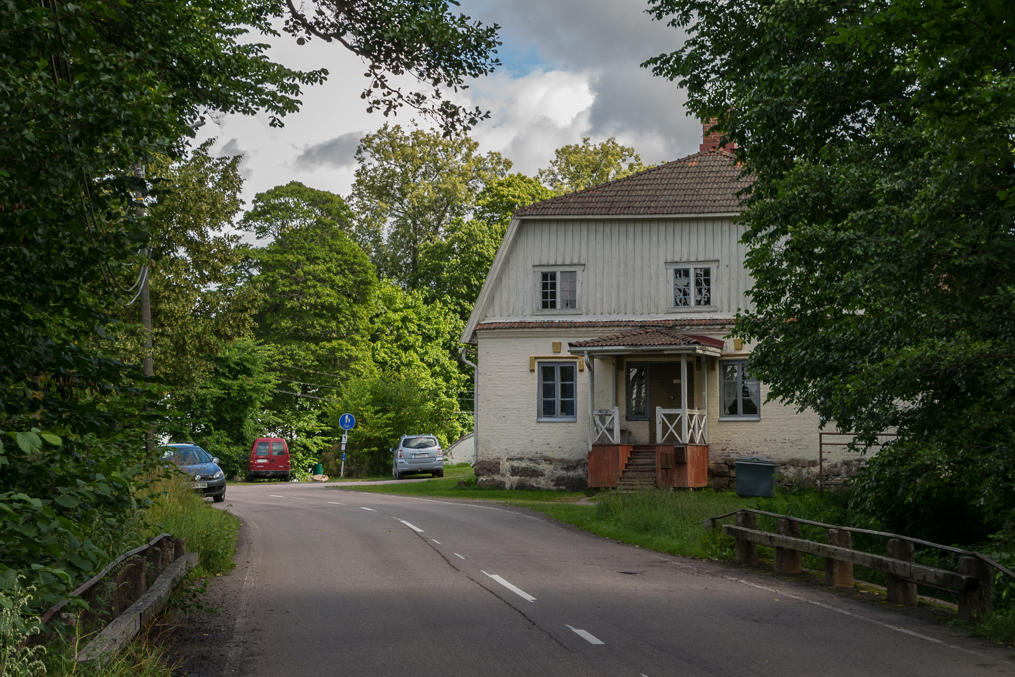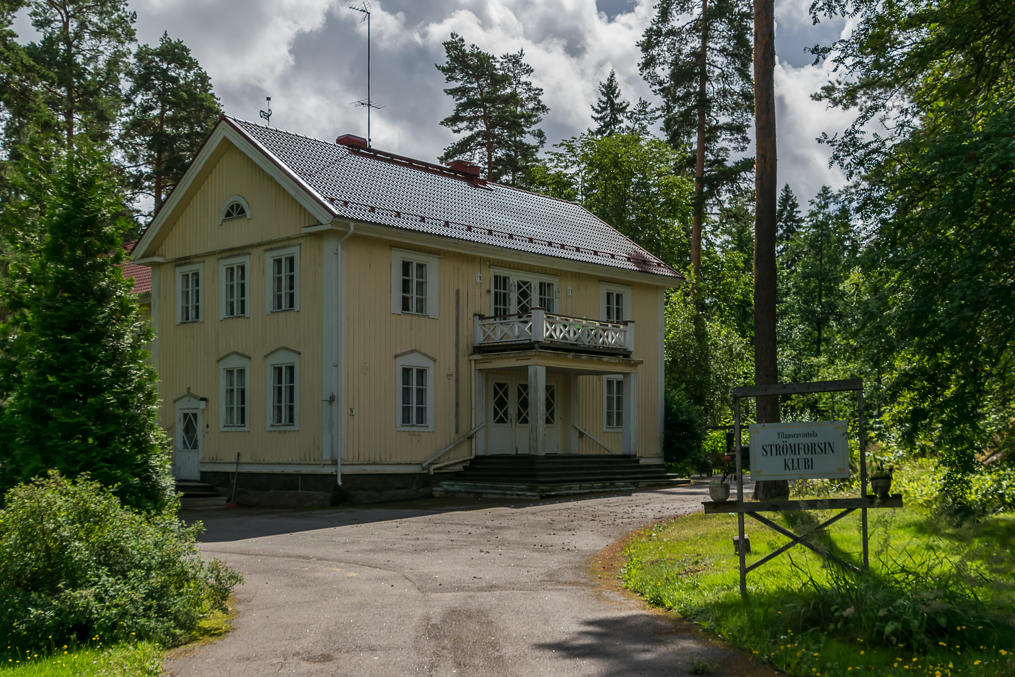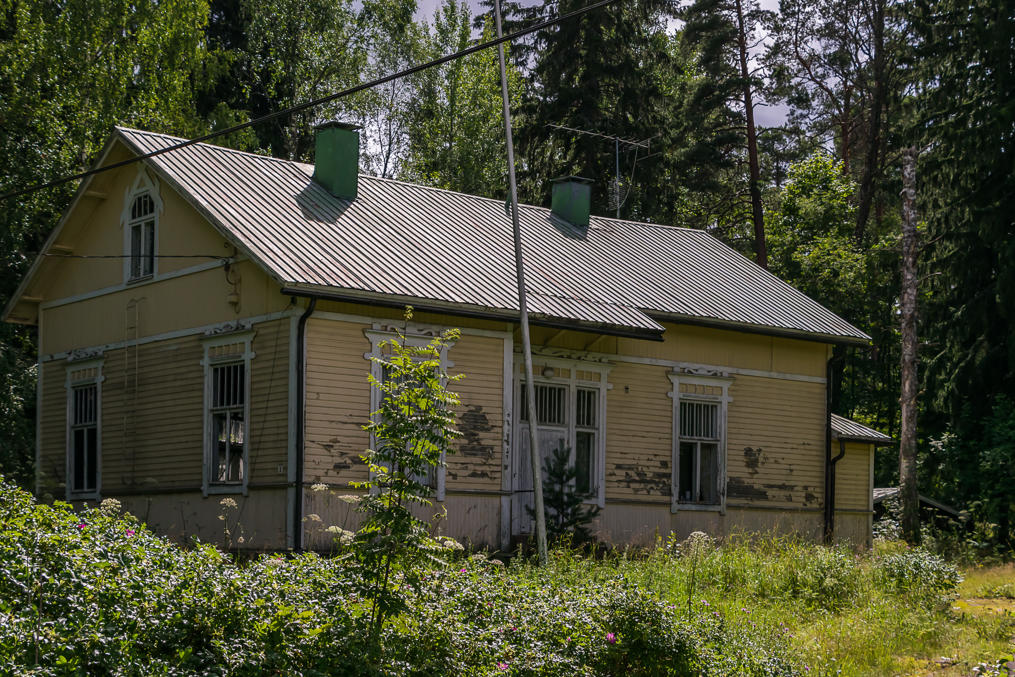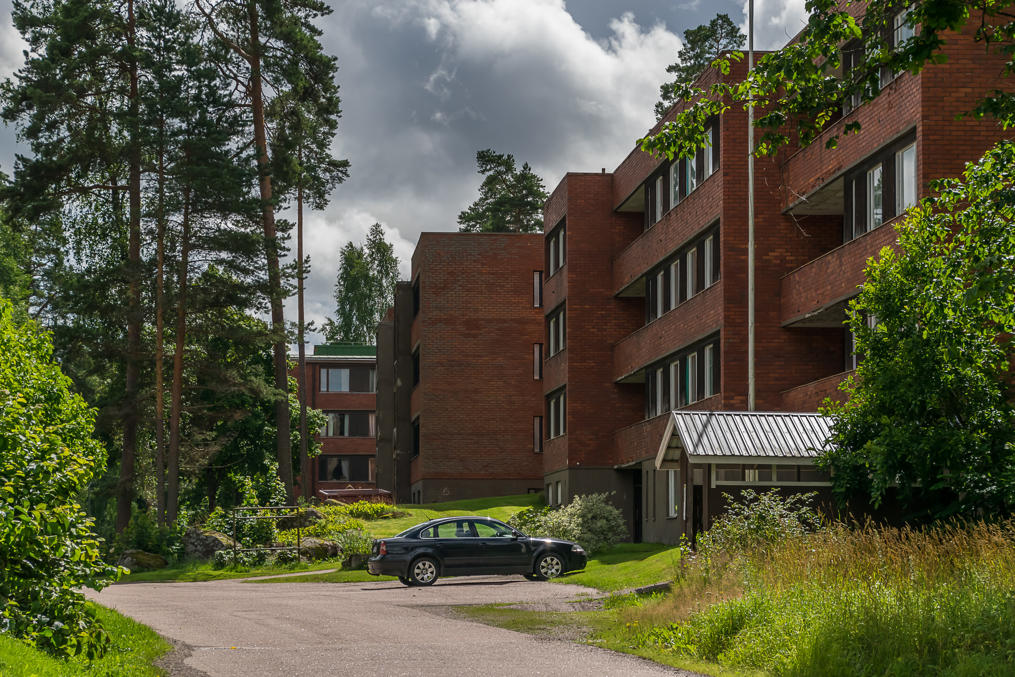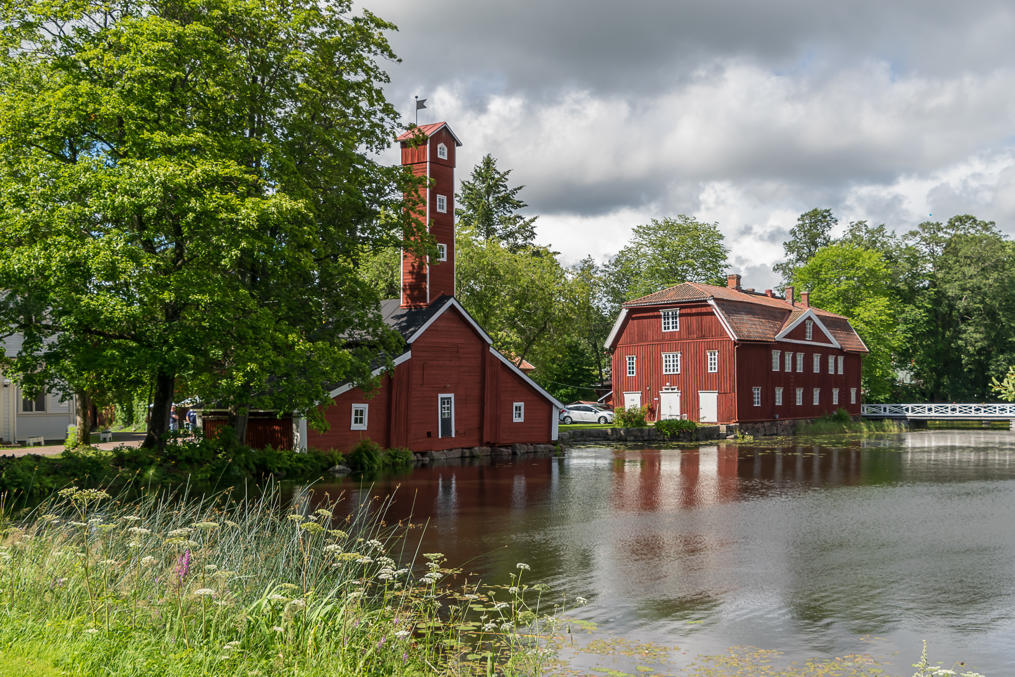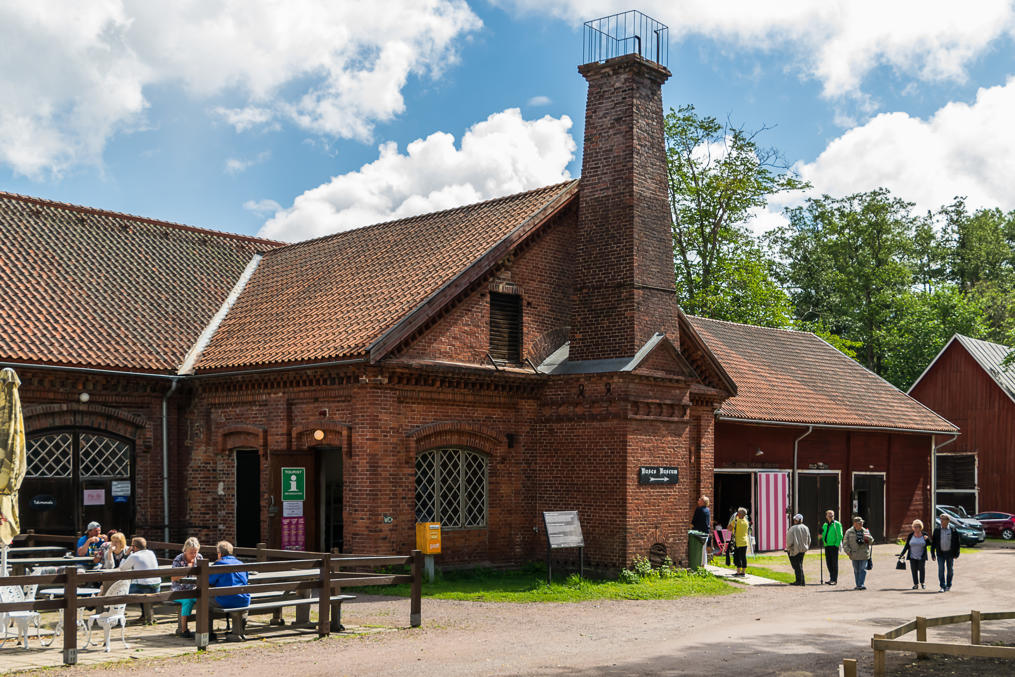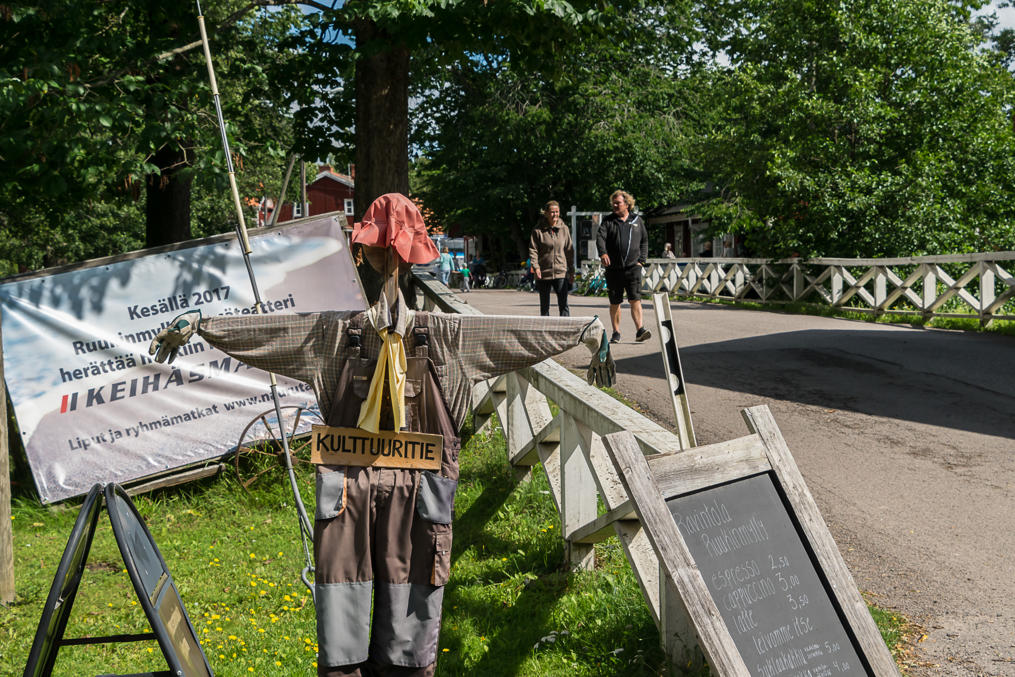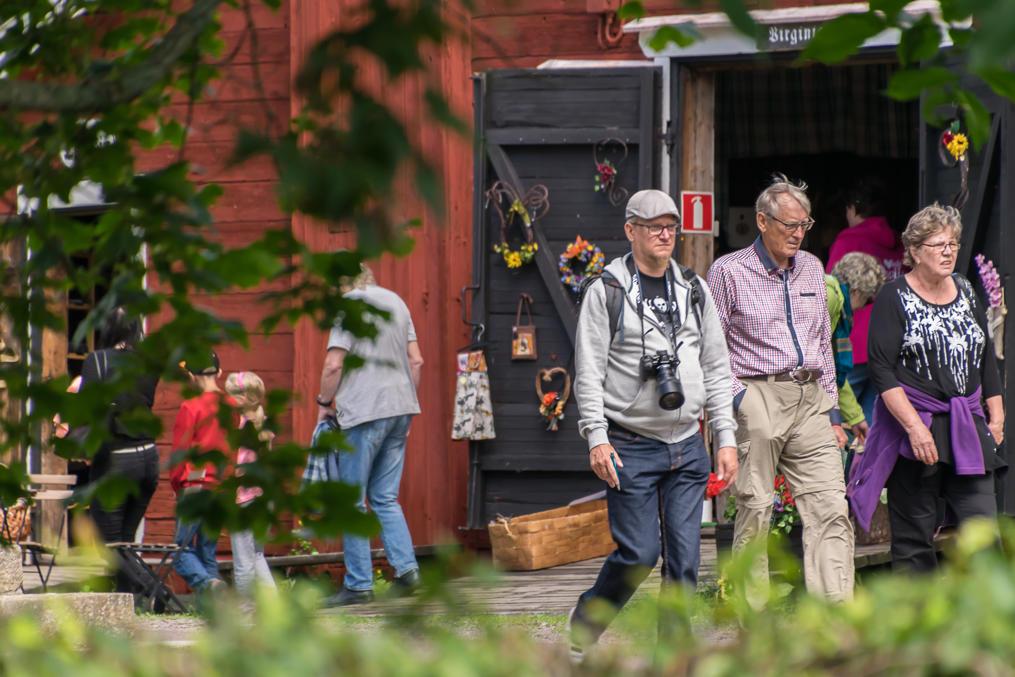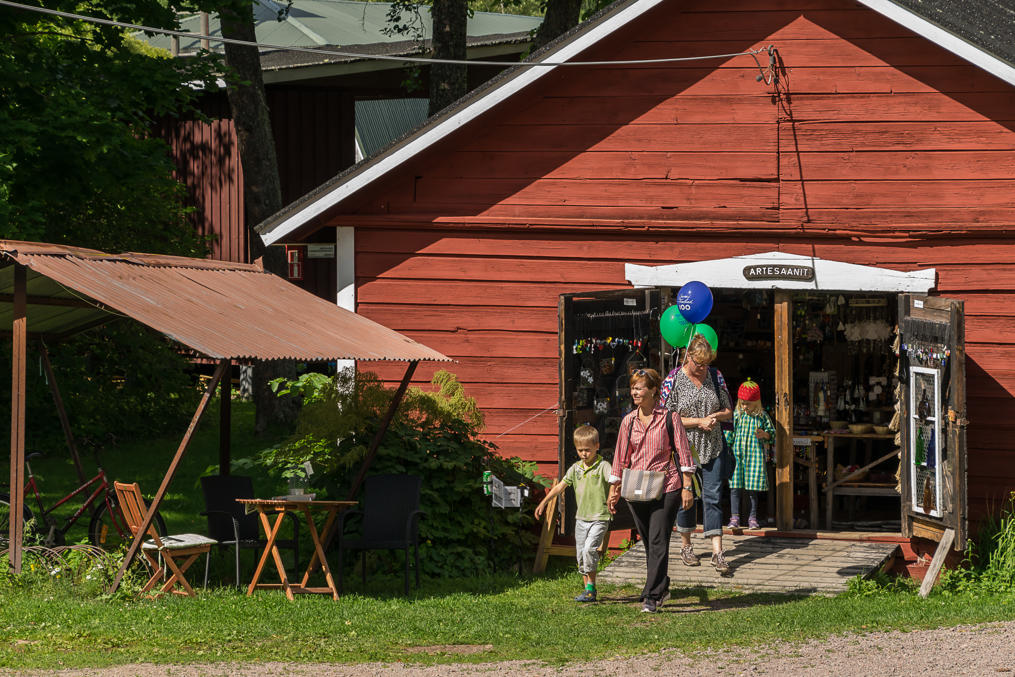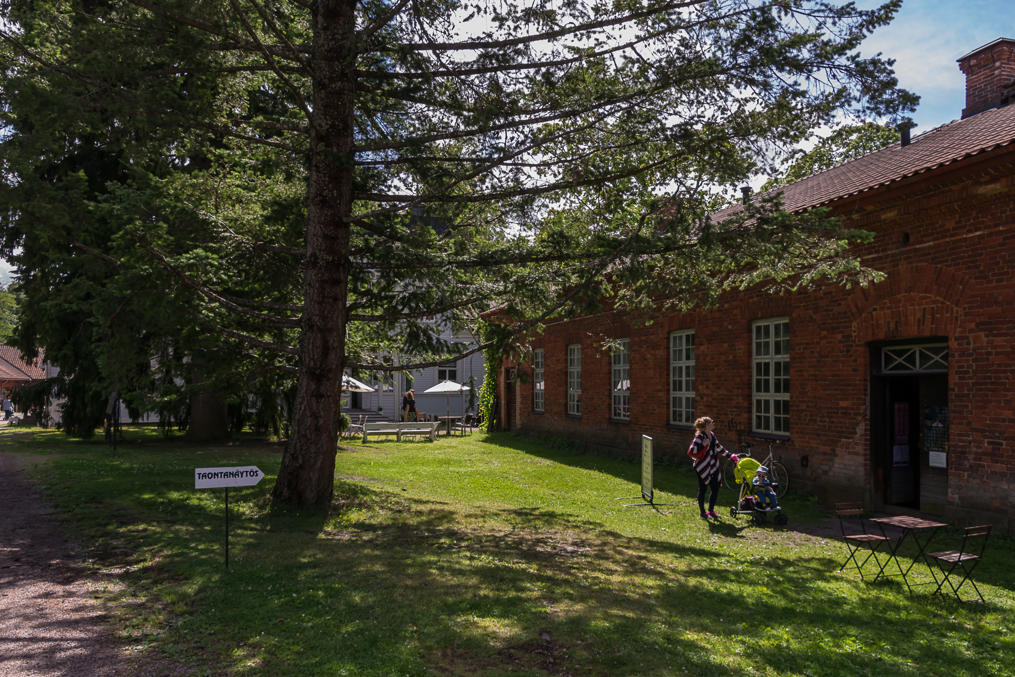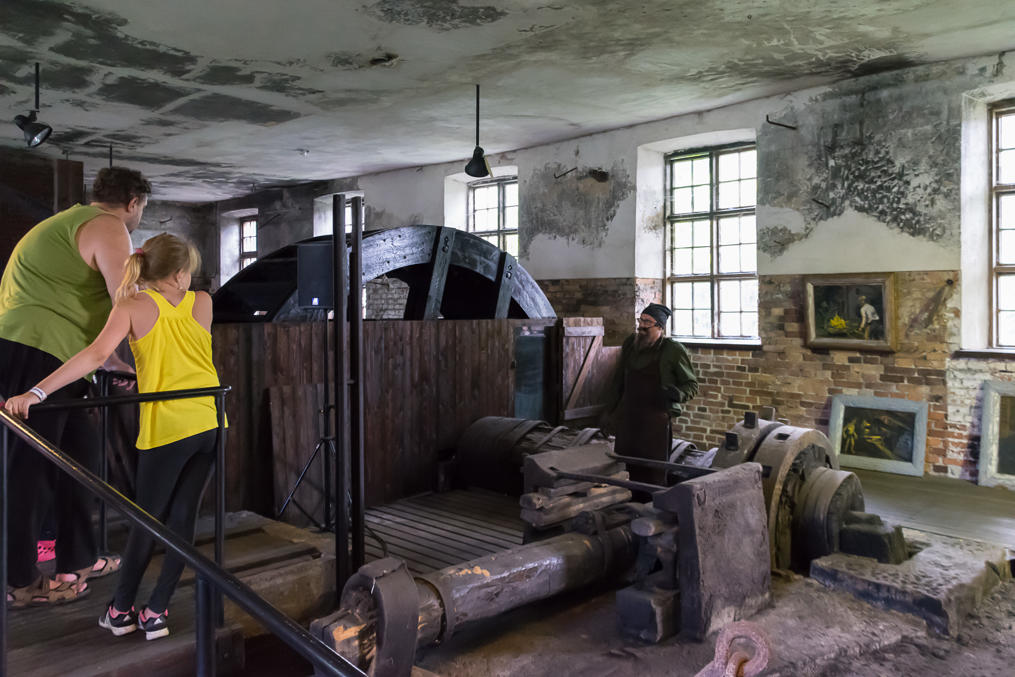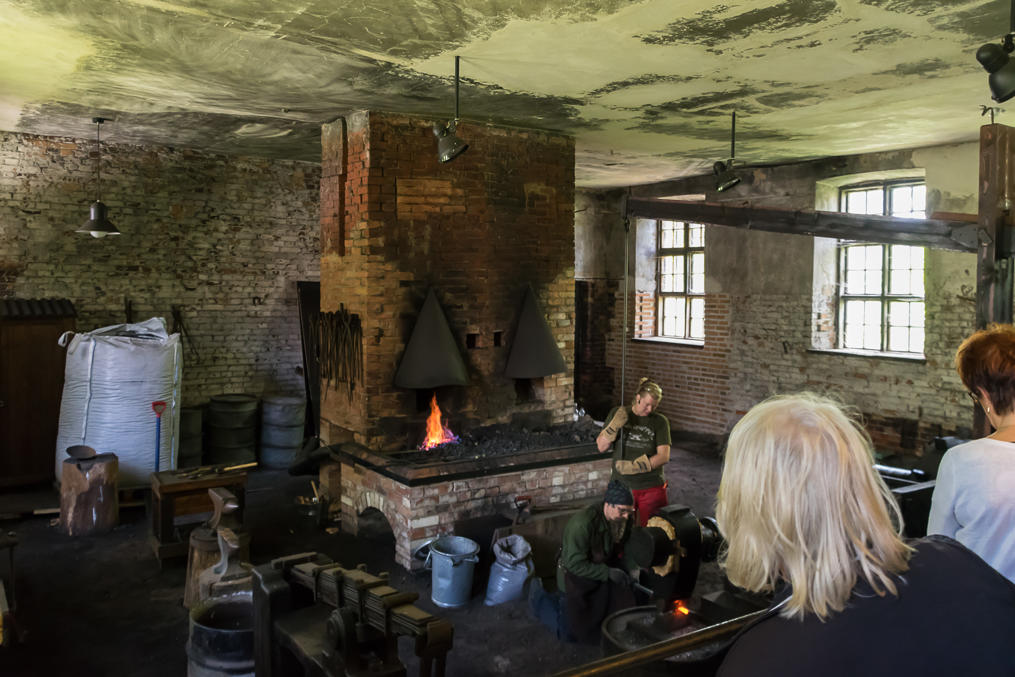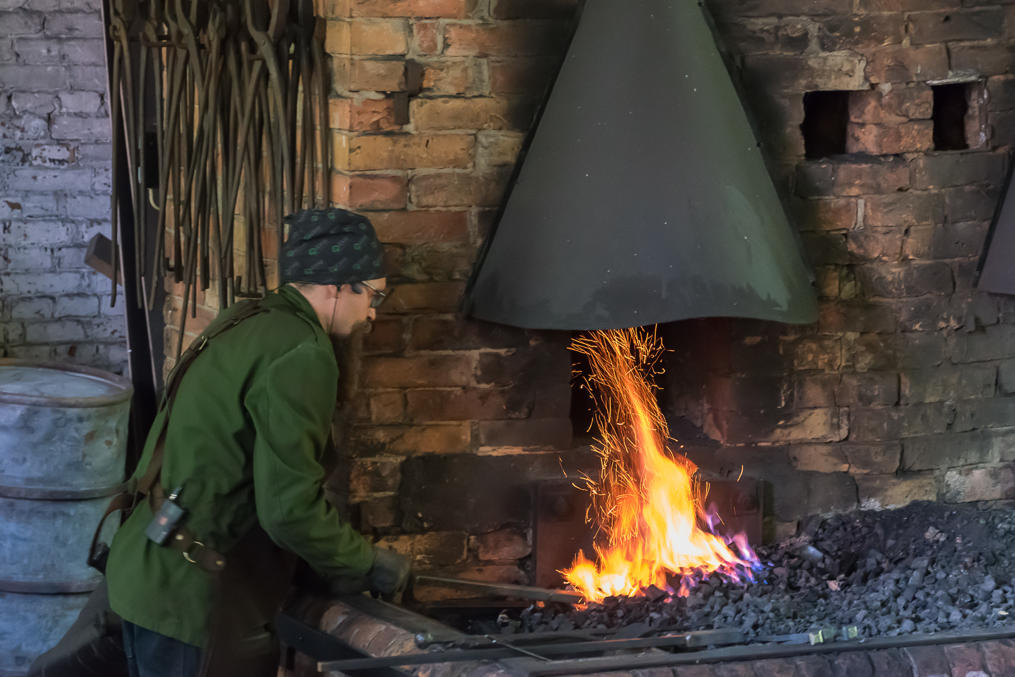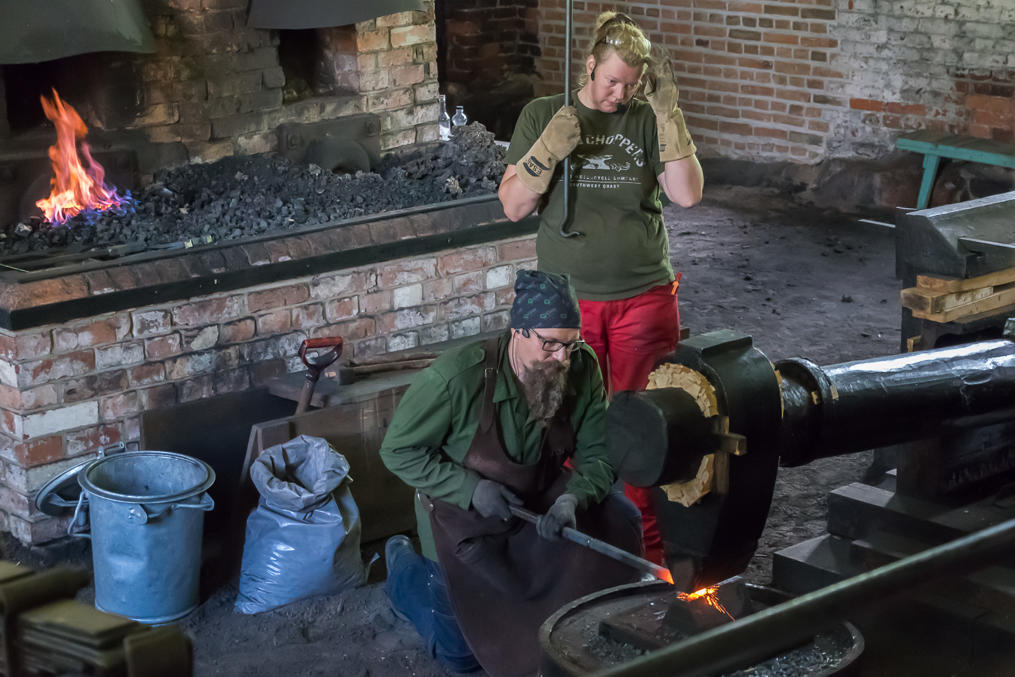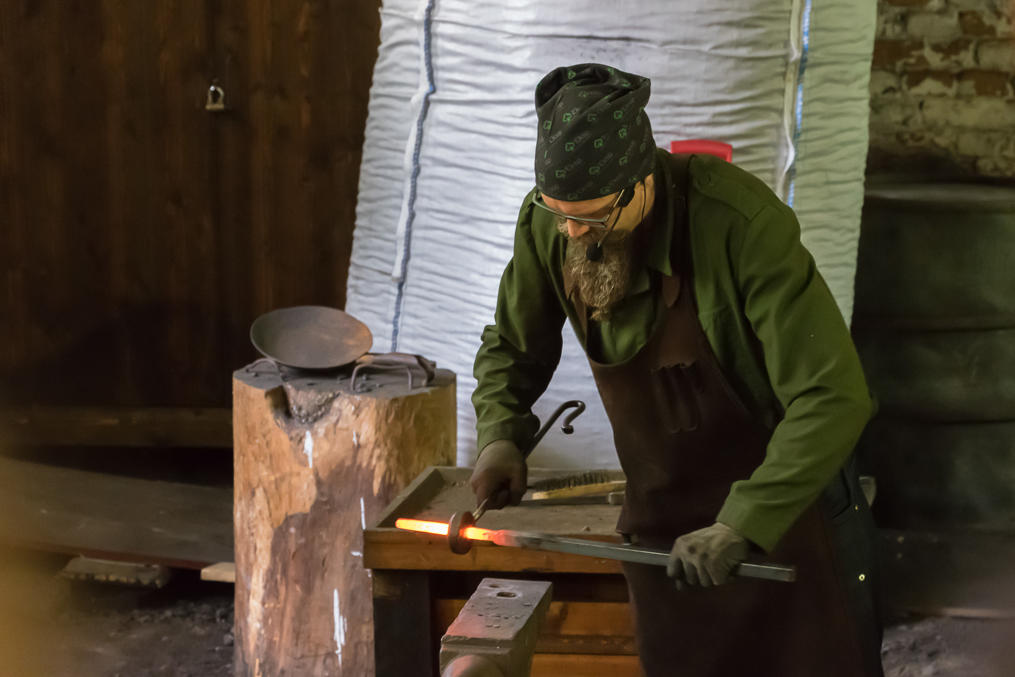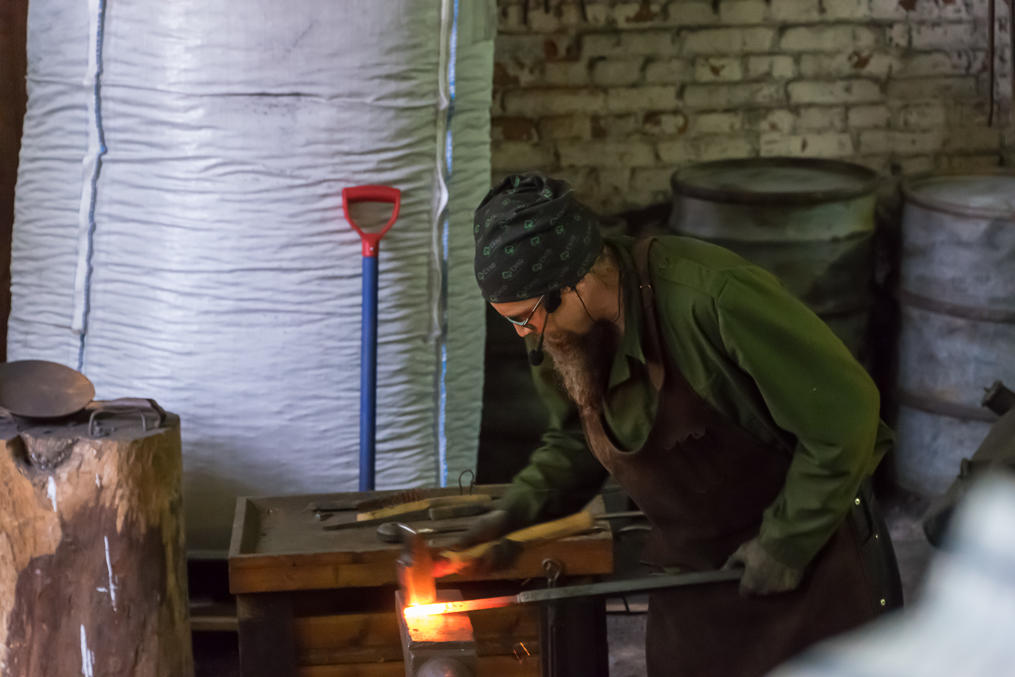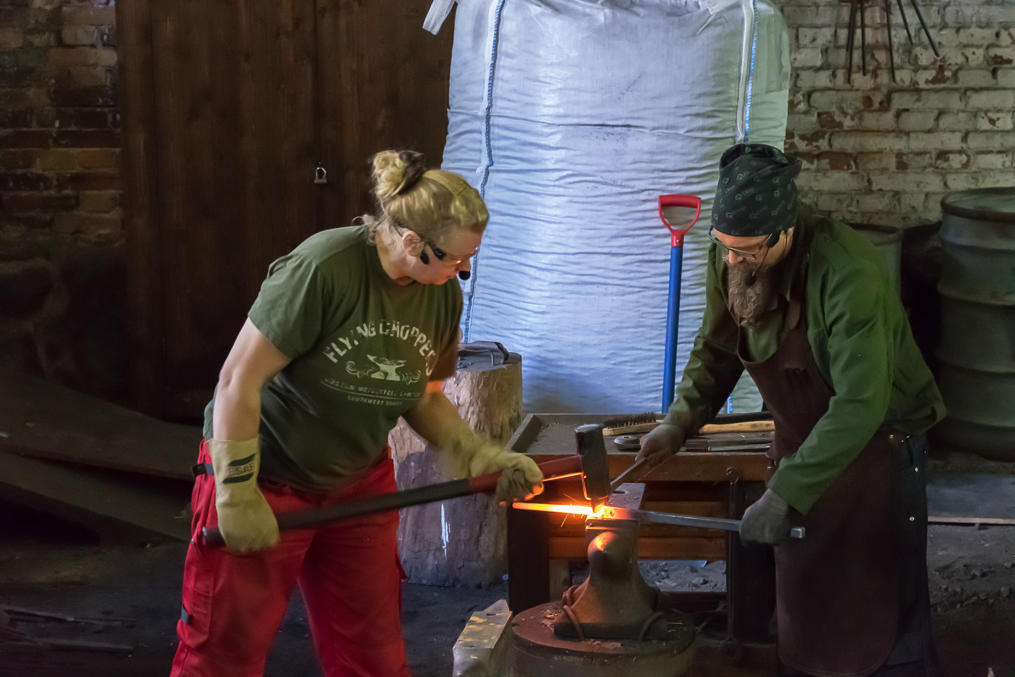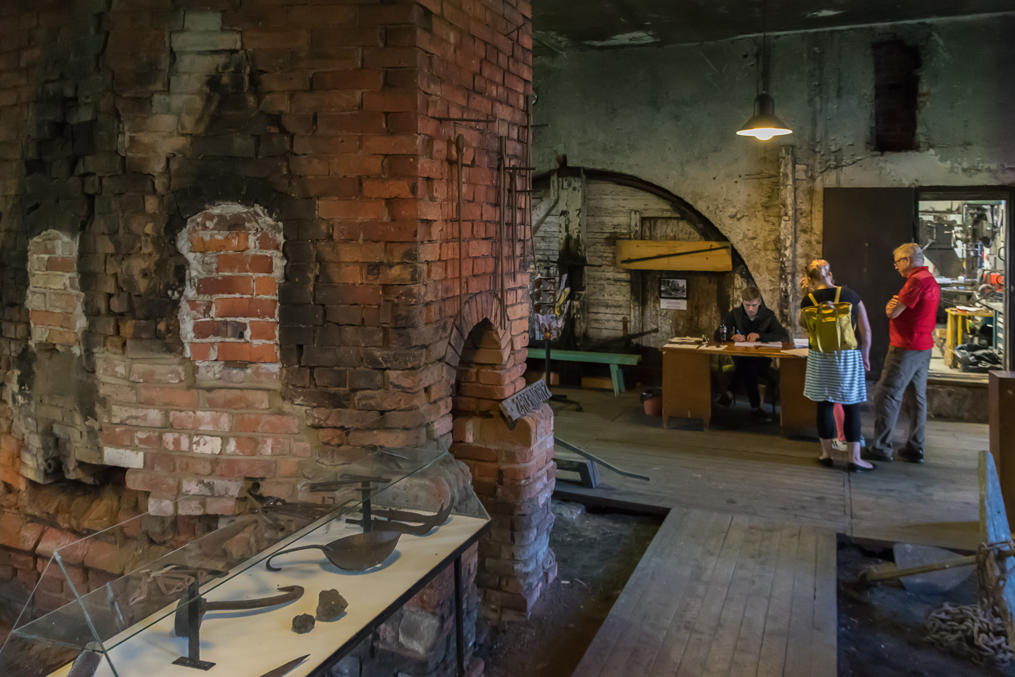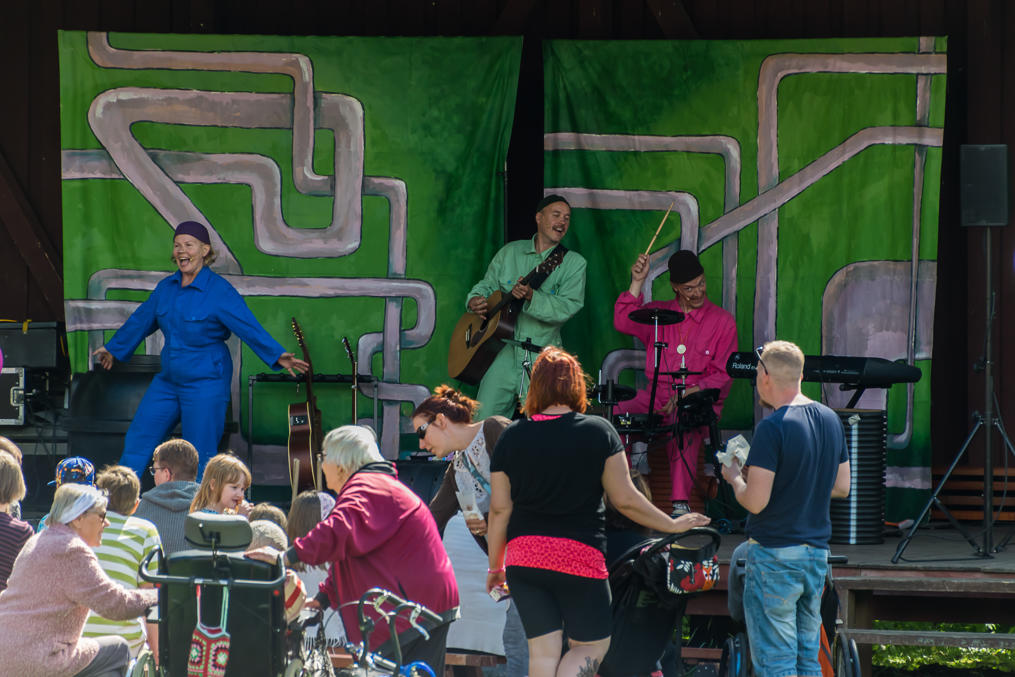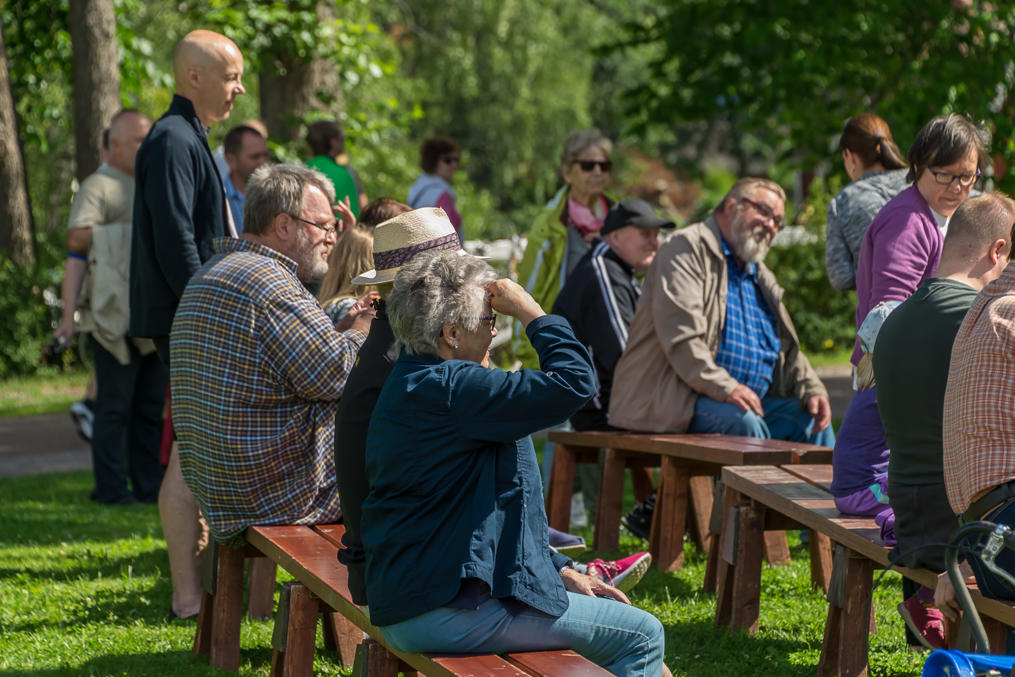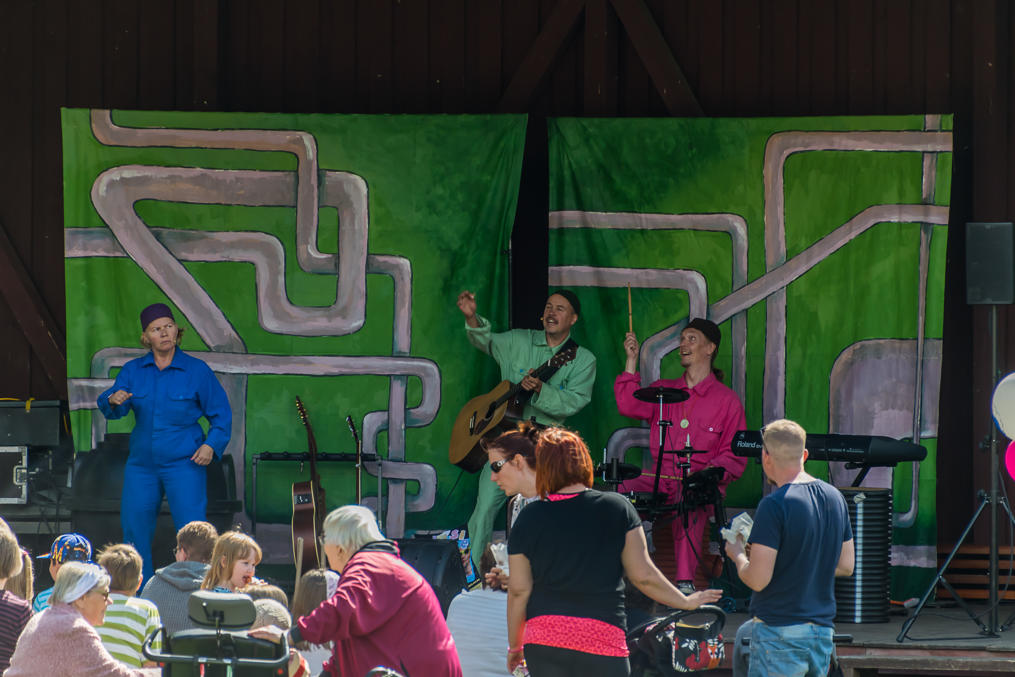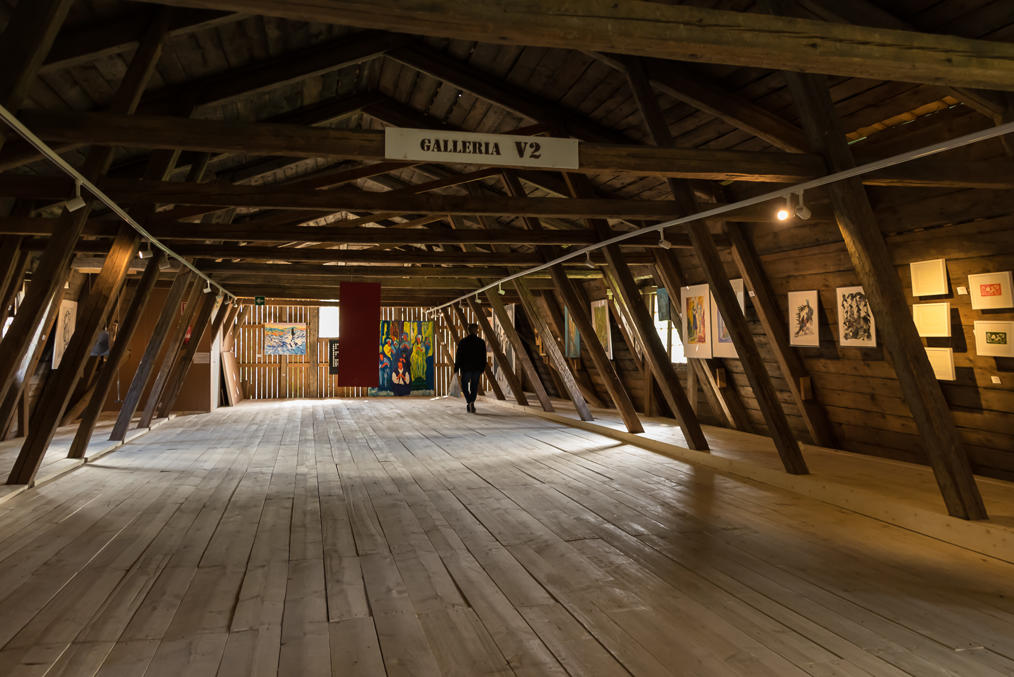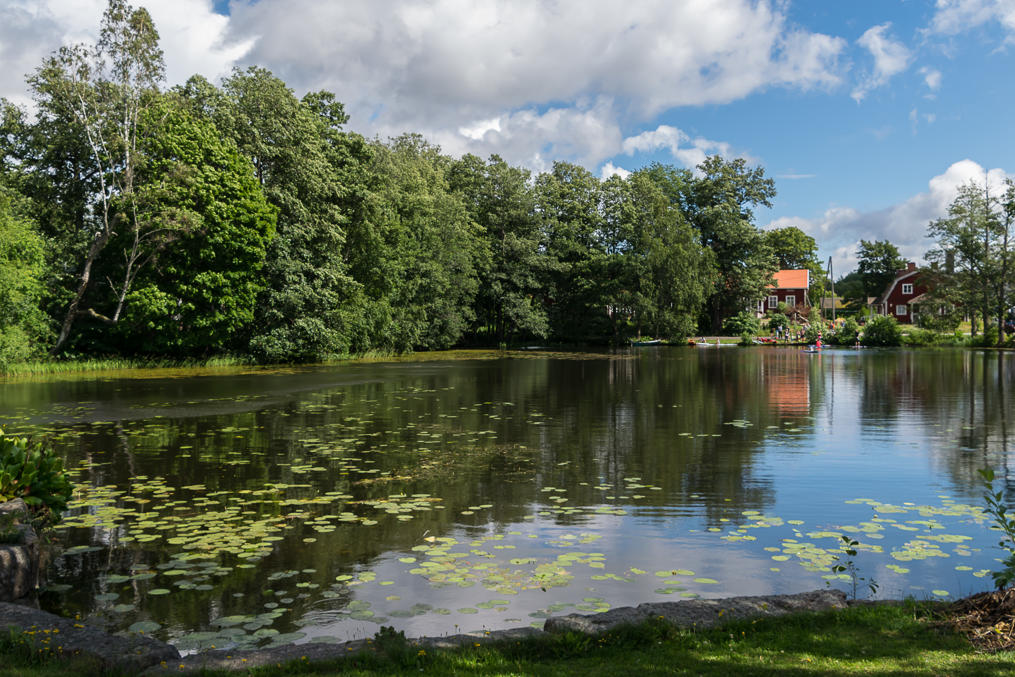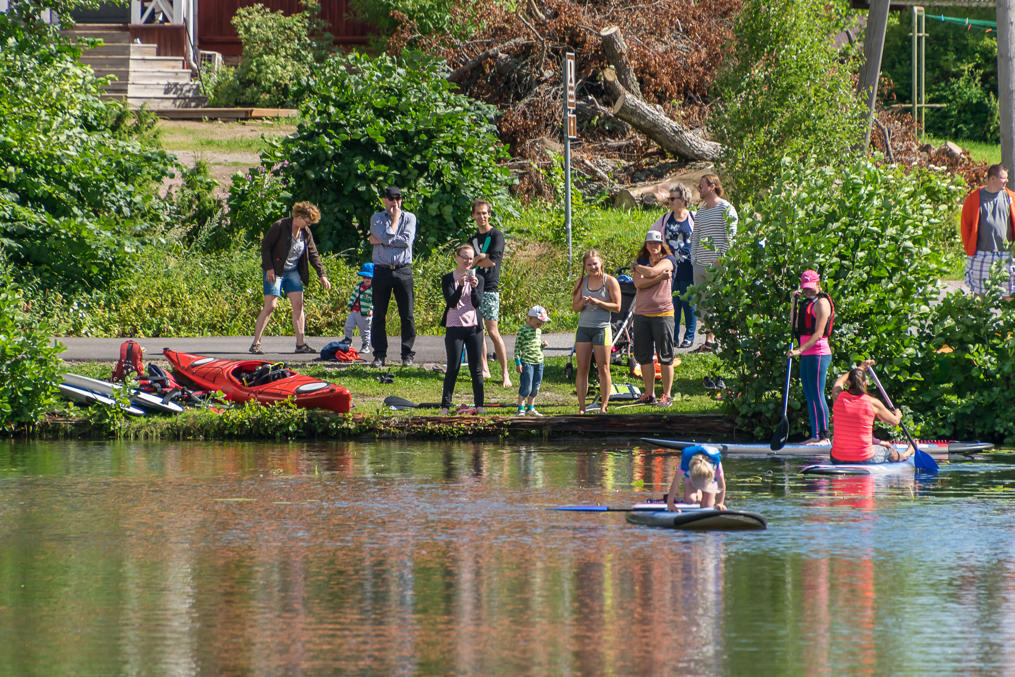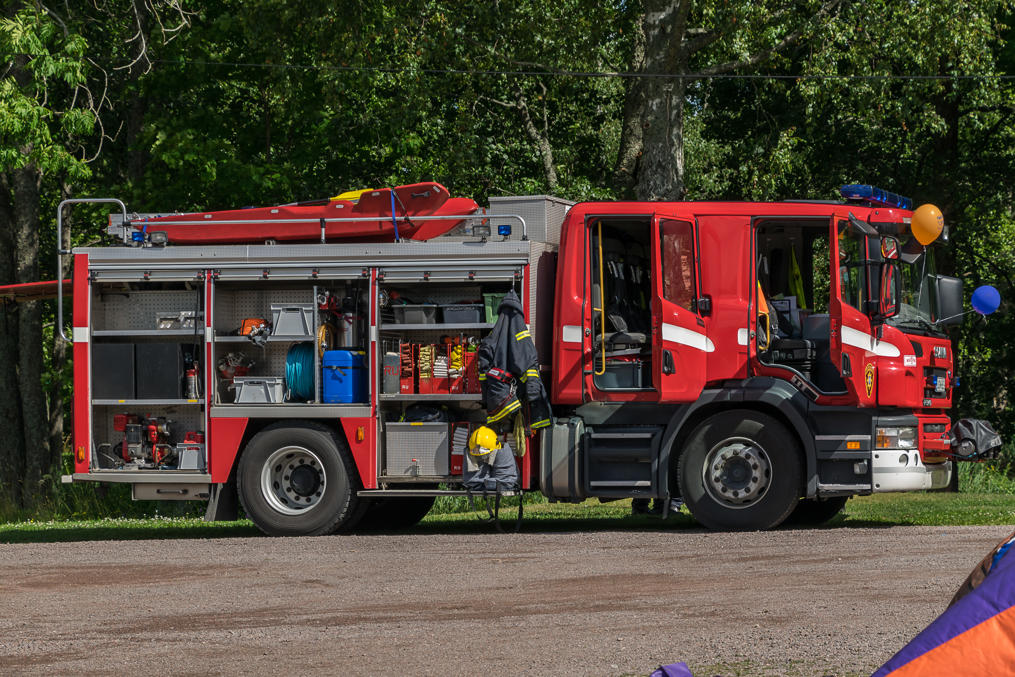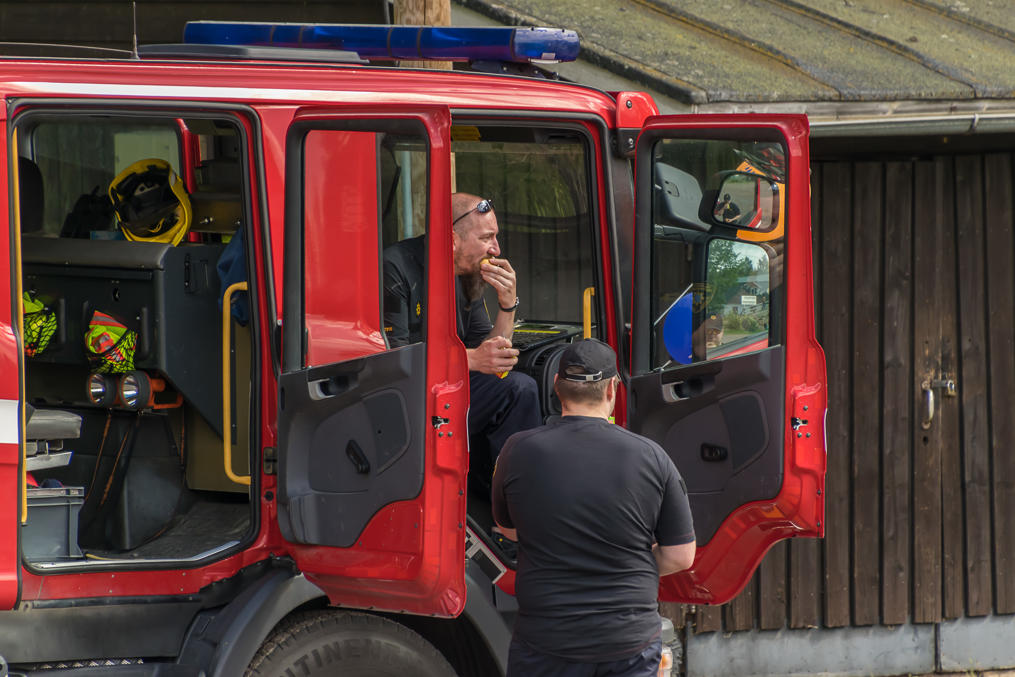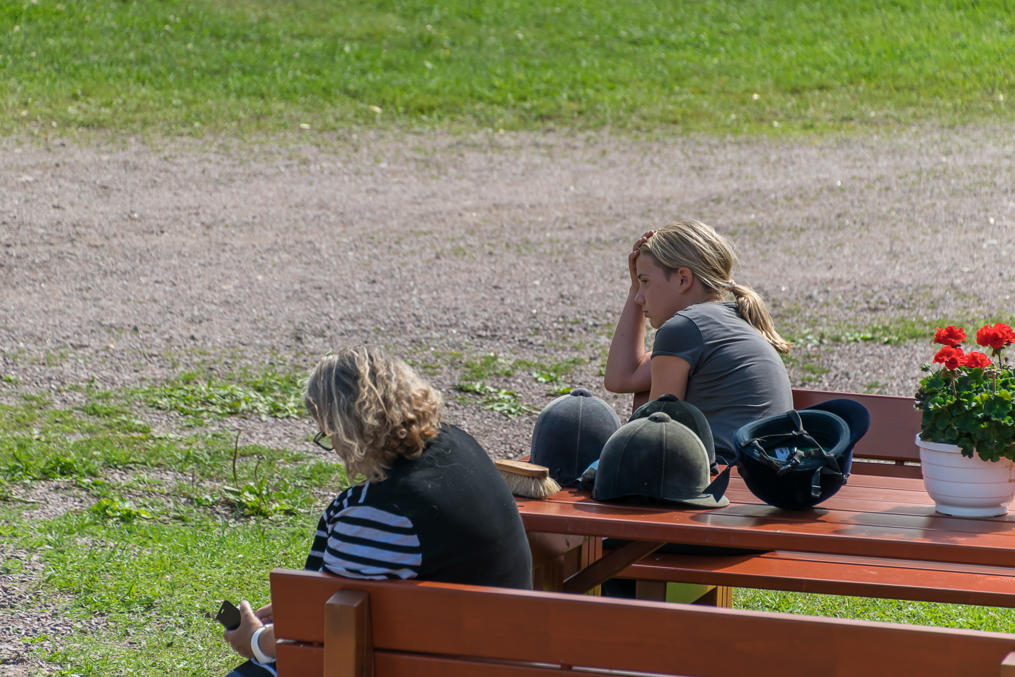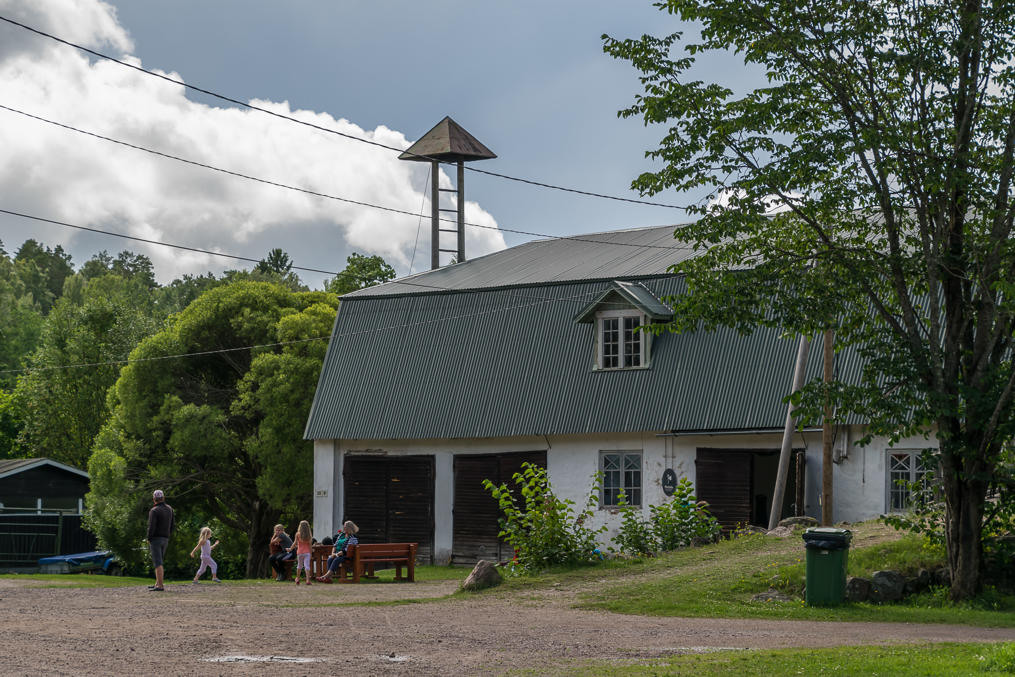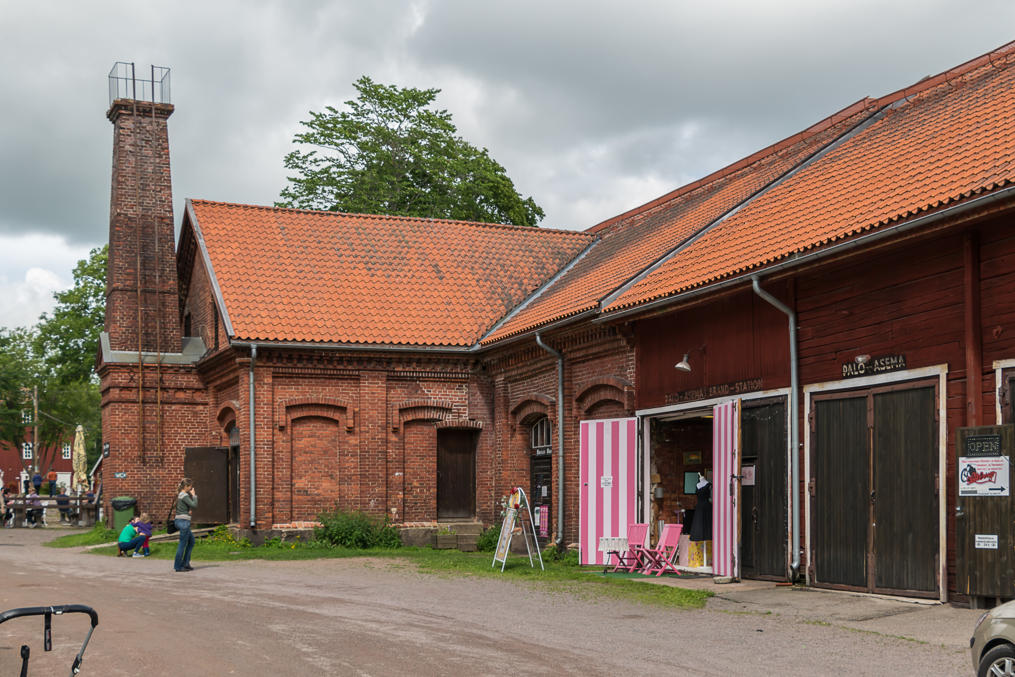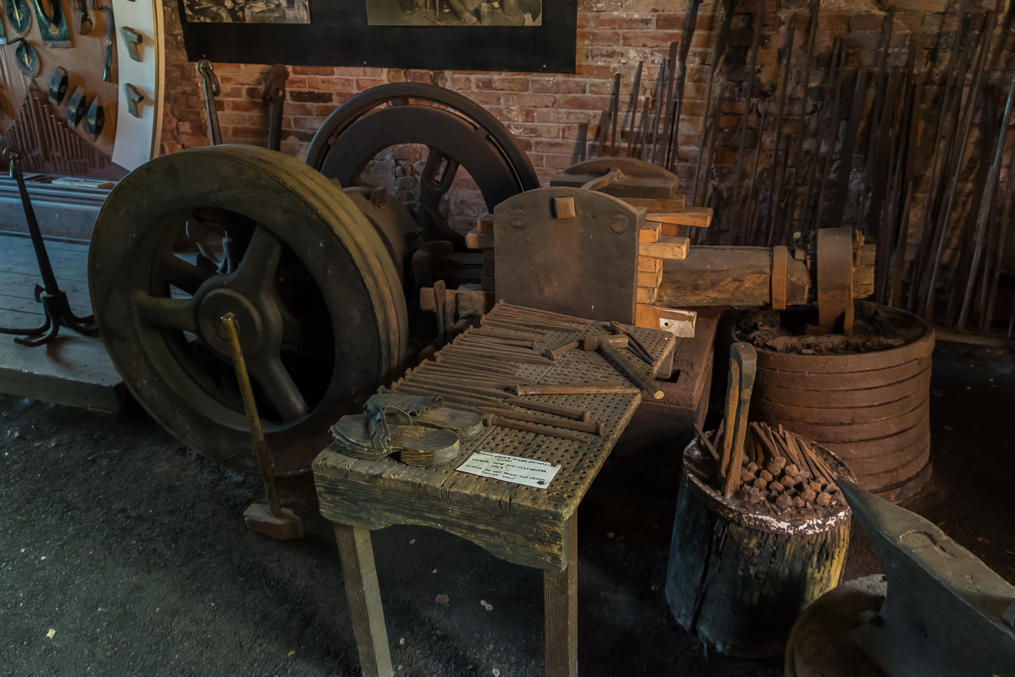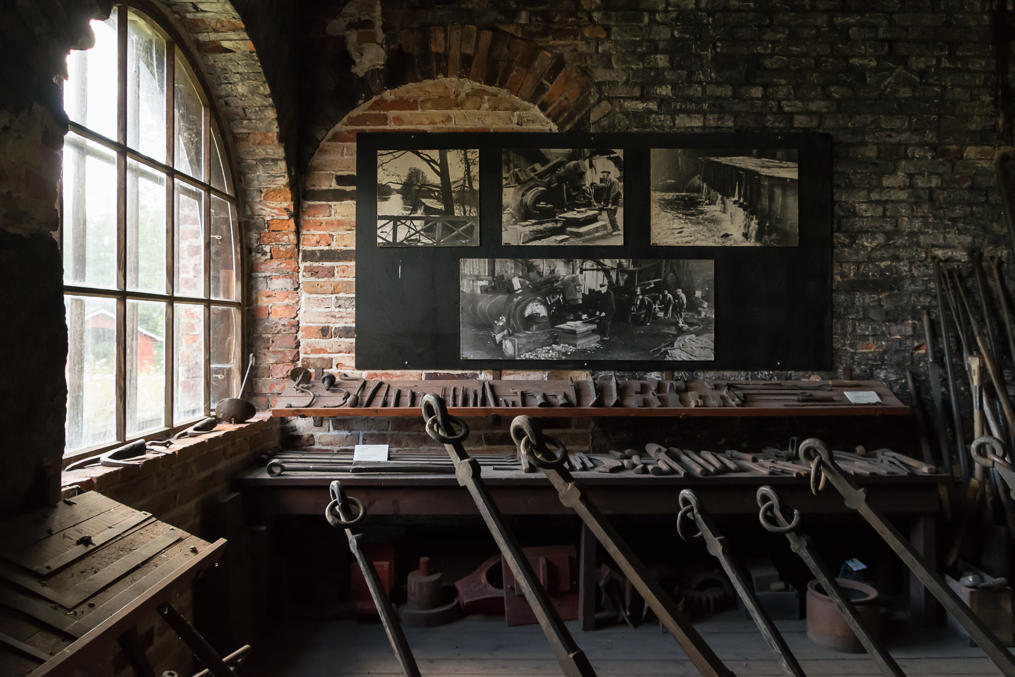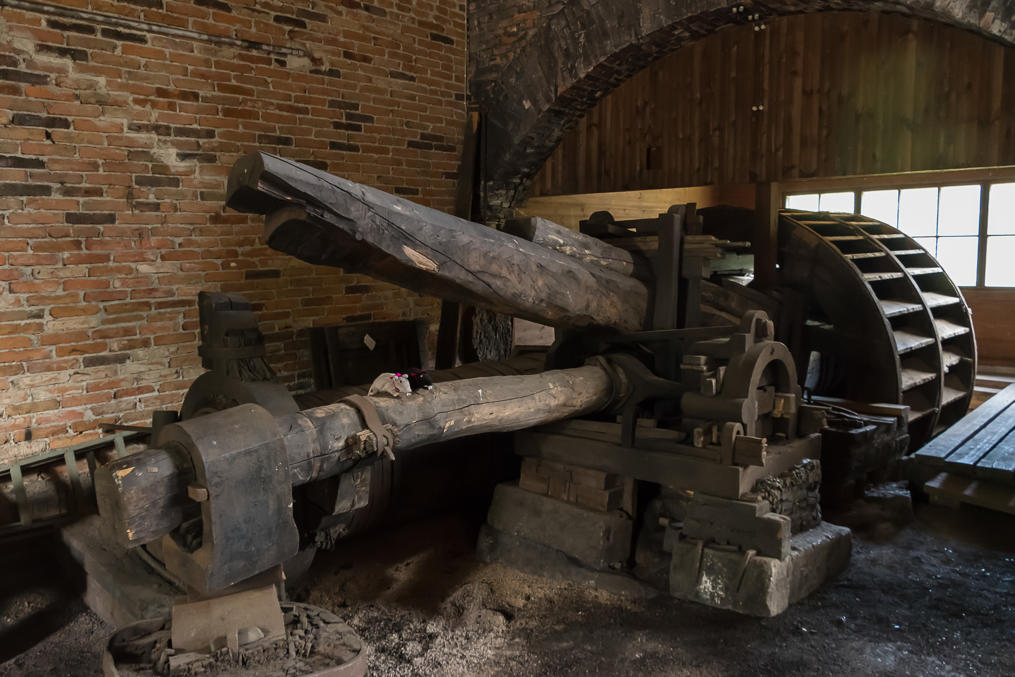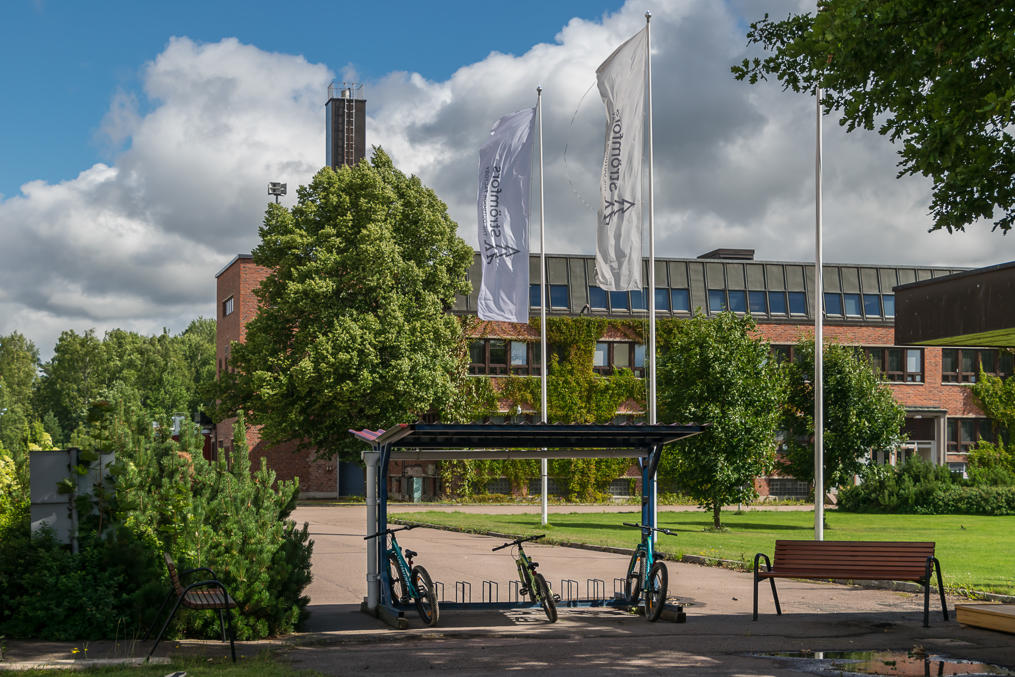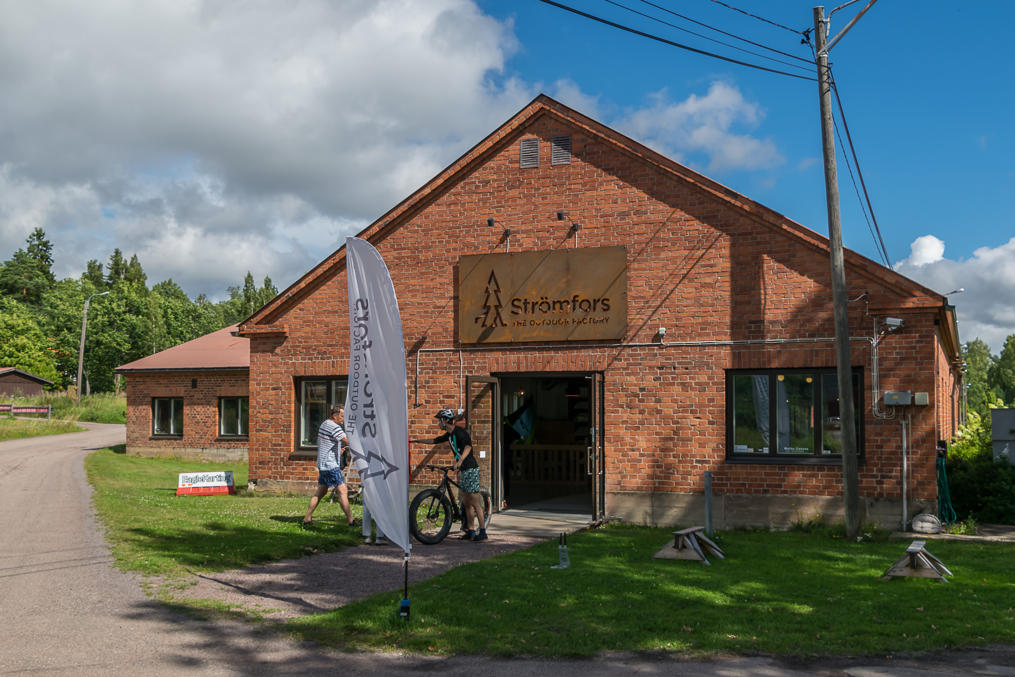Ruotsinpyhtää or Strömfors is a village in Loviisa Municipality in Uusimaa (capital region), Finland. Located about 20 km away from the town of Loviisa, it is notable as the site of old ironworks, which now operates as a museum.
The ironworks was originally founded in 1698 by some baron Johan Creutz. In 1743 Sweden lost the War of Hats to Russia, and a new border was drawn along Ahvenkoski (Finn. Perch Rapids), the western lower arm of Kymi River. The old parish of Pyhtää was split in two, and its western part eventually became known as Ruotsinpyhtää: Swedish Pyhtää. Soon after the war, the ironworks was bought by Anders Nohrström and Jakob Forsell, local merchants. They greatly expanded operations, and named the ironworks Strömfors (Swed. something like Current Rapids, but actually a made-up word from their surnames). Forsell eventually became knighted (and got an "af" in his surname), and his dynasty owned Strömfors up until 1886. The golden age of Strömfors was under Virginia af Forselles, who owned and managed the ironworks itself from 1790 up until her death in 1847. Most of the surviving Strömfors buildings date to Virginia's era. She was intimately familiar with the ironworks operations, paid generous salaries, and was greatly respected by the workers who called her "Her Grace".
Strömfors was bought in 1886 by Antti Ahlström, the founder of one of the biggest Scandinavian manufacturing companies. In 1947, a new electric and plastic accessories factory was founded nearby by Ahlström; it was later sold to Schneider Electric, and was shut down in 2014. Meanwhile the old ironworks was shut down in 1950, and later was converted into a museum where you can get familiar with how it all used to work. There are restaurants, small craft shops, and galleries. The whole thing reminds me of Verla cardboard factory, which, conincidentally, was also an old factory powered by the Kymi River, significantly upstream of Ruotsinpyhtää. Although Verla might be a bit larger.
As far as I understood Strömfors didn't actually smelt its own iron, working on imported Swedish metal instead. Thus it does not have any blast furnaces, which I didn't know beforehand and which made me slightly disappointed. It was purely a metalworking operation.
Ruotsinpyhtää ironworks is one of the main sights of Loviisa municipality (it used to be the center of its own municipality, but was consolidated to Loviisa since 2010). It is signposted from the main Road 7 (Ruotsinpyhtää Ruukki/Strömfors Bruk) and easily accessible by car. The place is worth visiting mainly on summer weekends, when it gets full of life (you can see the detailed opening days at their website, only in Finnish though). Loviisa tourist website claimed that on the day when I got there Kymi River Festival was held in Ruotsinpyhtää. I didn't see anything to do with Kymi River in particular but the place was certainly crowded by Finnish standards.
1. Ruotsinpyhtää is a relatively small village. It looked like all the parking lots and road shoulders near the ironworks were already occupied, so I made a circle around the village and left my car near the local stadium. Rather far from the ironworks, a kilometer or so, but the hiking trail that I intended to explore next started near that stadium as well, so I didn't mind a little walking to the ironworks first.
2. Even before you see the ironworks, you can notice that Ruostinpyhtää is full of old wooden houses and mansions. Most of them are in pretty nice shape.
3. Some look decidedly derelict though.
4. There are a few more-or-less modern apartment buildings there as well. But we didn't come here to look at the apartment blocks, did we.
5. So, here it is! The old ironworks!
6. The ironworks consists of a number of buildings. Only two forge buildings really seem to be of an industrial nature. Others apparently were meant for administrative tasks, or used as mansions by the af Forselles family. There are little signs but they weren't in English (and I didn't take pictures to translate later), so I can't really tell you what each of the buildings was originally meant for.
7. The arm of the Kymi River that passes through Ruotsinpyhtää seems to be a relatively narrow and quiet one. There are some islands in it; the bridge in the background goes to one of these. The islands are occupied by private villas now.
8. Upper Forge building with a museum.
9.
10. Crafts shops.
11. Didn't really visit any shops. I ceased buying souvenir trinkets during travels some years ago.
12. The Lower Forge building isn't very impressive-looking, but it is actually the coolest part of the whole thing; this is where forging demostrations take place. They are held on weekends from 12:00 to 14:00 in summer, I believe, but I definitely advise you to check the website before going here. In my case, there was that Kymi River festival so of course there was a demonstration as well. By the way the entry is completely free!
13. Inside the building you'll see a furnace and a huge cool-looking machine, a water-powered hammer.
14. Two metalsmiths were holding a demonstration, a man and a woman. They were explaining everything they were doing but only in Finnish, so I didn't catch the fine details. The general idea is pretty clear though. They were forging large nails (for construction or more likely for horseshoes) from iron bars.
15. The smith has one great-looking beard! The first step is heating up the bar in the coals of the furnace. Since this takes time and has to be repeated after a bit of forging they were actually working with two bars; while one was heating up they were working on another one.
16. The bar needs to get white-hot. After some of the forging steps they put it into a bucket of water to temper it.
17. The big water-powered hammer is used for rough shaping of the nail. The woman is activating it by holding on the lever. While she's doing that the hammer begins continuously hitting the anvil. All the other smith has to do is put the bar on the anvil and rotate it as needed.
18. Of course a lot of things still need to be done manually. This tool is used to making the head of the nail. The smith inserts the forged pointy end into the hole in the tool, then into the hole in the anvil vertically, and hits the bar on the flat end, flattening its part which is held against the tool.
19. More fine-shaping of the nail.
20. The smith woman is quite an amazing lady too! She reminds me of an actress who plays Brienne in the Game of Thrones show. She wasn't just an assistant but was doing some forging herself too. Here they are cutting the mostly-finished nail off the bar.
21. So it was quite a nice demonstration all in all. It seems like quite a lot of labor was necessary to make rather simple nails. Imagine what it used to be like without water-powered hammers (or what making more complicated objects was like).
Of course I doubt they actually kept using these old hammers up until the ironworks closure in 1950. You can see a door in the background which leads to a room which is not a part of the public exhibition, but holds some rather ordinary-looking lathes and other machining tools.
22. Outside again. Some sort of concert.
23. The performers were singing cheerful upbeat songs and clearly enjoying themselves.
24. Older Finns are thoughtfully watching the performance.
25. "You're going off script aren't you?"
26.
27. The exhibitions mentioned are mostly pictures.
28.
29. This kind of sport is called paddleboarding if I'm not mistaken.
30. Local firefighters are demonstrating how a fire engine works to kids.
31.
32. Well, not so much demonstrating as eating meat pies maybe.
33. Am I imagining things or is this pony visibly pregnant? Is it okay to offer rides on a pregnant pony?
34. Girls accompanying the pony seemed to be bored to tears.
35.
36. The Upper Forge holds a small museum among other things. It is also free. In fact all Ruotsinpyhtää exhibitions are always totally free (unlike Verla).
37. You can have a look at various equipment and old offices interior.
38.
39.
40. "New" Strömfors factory, the one that belonged to Schneider Electric and shut down in 2014, is located just right by the old ironworks. Its buildings and grounds are in good shape, and are now being offered for rent as Strömfors Innovation Park. I'm not sure if they're having much success.
41. At least one of the enterprises working here is Strömfors Outdoor Factory, which is apparently not a factory at all but rather an outdoor tourism company.
42. Supposedly the most beautiful building of the ironworks is its old church, but it is now being repaired, and is completely covered by scaffolding. There is a Winter War graveyard nearby, and a more touching monument as well: a monument to those whose graves were left behind in Karelia. Similar monuments were commonly built in the decades following the war, as most people displaced from the Karelian Isthmus and Ladoga Karelia were unable to visit the graves of their loved ones anymore.
I'd place Ruotsinpyhtää in the vast category of "don't miss it if you're in the area but I wouldn't plan the whole trip around it" places. Apart from the ironworks there is a nice hiking trail near the village which I made sure to check out; it's supposedly the most notable one in Loviisa. I'll cover it in the next post.
